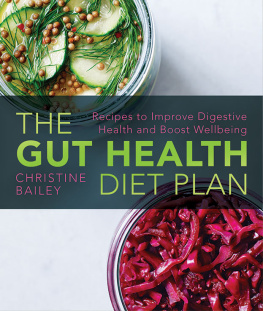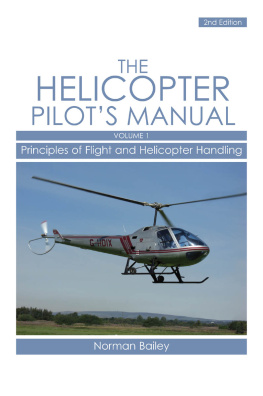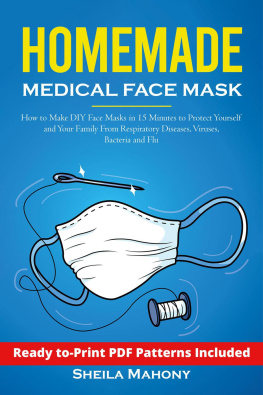Homemade Face Mask
The Complete Guide To Learn How to Make Your Own Medical Face Mask to Prevent and Protect Yourself from Viruses and Stay Healthy
Chloe Bailey
Copyright 2020 - All rights reserved.
The content contained within this book may not be reproduced, duplicated or transmitted without direct written permission from the author or the publisher.
Under no circumstances will any blame or legal responsibility be held against the publisher, or author, for any damages, reparation, or monetary loss due to the information contained within this book, either directly or indirectly.
Legal Notice:
This book is copyright protected. It is only for personal use. You cannot amend, distribute, sell, use, quote or paraphrase any part, or the content within this book, without the consent of the author or publisher.
Disclaimer Notice:
Please note the information contained within this document is for educational and entertainment purposes only. All effort has been executed to present accurate, up to date, reliable, complete information. No warranties of any kind are declared or implied. Readers acknowledge that the author is not engaged in the rendering of legal, financial, medical or professional advice. The content within this book has been derived from various sources. Please consult a licensed professional before attempting any techniques outlined in this book.
By reading this document, the reader agrees that under no circumstances is the author responsible for any losses, direct or indirect, that are incurred as a result of the use of the information contained within this document, including, but not limited to, errors, omissions, or inaccuracies.
Preface and Acknowledgements
I would like to thank all those readers troubled by different viral infections going around these days. Those readers, who have a whole lot of questions about personal protective measures, that are either unaddressed or further complicated by what is not available on the internet. I would also like to thank all my teachers, colleagues and family who over the time have strengthened my resolve to pursue a career, which is based around helping and providing solutions to those who are looking for them.
Together, we are trying our best to create greater awareness among the younger and older generation alike about protecting oneself and each other from various infectious epidemics and pandemics, and all the aspects associated with it. The book does not stop at the different ways of making masks but goes beyond to explain what kinds of masks can be used. This book also provides an account of those diseases which are transmitted by vapours and droplets, how these affect our bodies and what impact these have on a global scale. I have also tried to address and provide other protective measures apart from facial masks, that can be helpful in enhancing immunity and creating barriers against various diseases. I hope that this book proves to be beneficial and rewarding for you.
Thanks for choosing this book, please leave a short review on Amazon if you enjoy it. Id really love to hear your thoughts!
Table of Contents
Chapter 1: Introduction
Over the past couple of decades, all the world has seen multiple epidemics and pandemics. Be it the Chinese SARS outbreak of 2002, MERS outbreak of 2012 or the recent outbreak of respiratory viruses from China, the larger population sizes and greater interaction with each other have made the possibility of viral transmission much easier than before. What is more troubling is that with the rapid pace these conditions spread, it becomes next to impossible for the infrastructure and protective measures in place to cope with the emergency.
Most outbreaks have been of respiratory viruses which transfer from one human to another through water vapours and air droplets. The most effective way of preventing this from happening, apart from social distancing, is by wearing face masks. However, fearful and greedy habits of humans often lead to hoarding and profiteering in such scenarios, leading to a market shortfall of masks and other protective products. It also becomes impossible at times to stay indoors or avoid contact with others, as most livelihoods in developing countries are dependent on day to day trade and jobs. The immense scale of poverty and tragedy that would likely occur without protection, can be avoided by trying creative and much simple methods of creating protective face masks at home. Many do it yourself (DIY) methods have been included in this book, to provide readers with safe and cheaper alternatives to make face masks and other physical protective barriers against transmission.
Apart from epidemics and emergencies, these masks can be used in normal times too. These prove beneficial in protecting from bacterial diseases such as tuberculosis and pneumonia. These diseases are very common in developing countries and contribute to the largest death toll among infectious diseases. Apart from infectious diseases, these masks can also be worn in smog, haze and smoke.
Chapter 2: Medical Masks
History
Traditionally, the ritual and practice of gloving, wearing surgical gowns and face masks date back to the 1860s. In 1897, Fluegge observed while studying the transmission of tuberculosis, that regular conversations could disseminate bacteria-laden droplets from the nose as well as lips, substantiating the demand for a good face mask (Spooner 1967). Further studies showed that when people talked, the sputum would carry bacteria and cause infection. In 1915, Weaver and Capps confirmed that face masks work against infectious diseases in addition to cross-infection. A mask which spreads over the nose and mouth is able to decrease the incidence of infectious spread during surgery.
Since that time, disposable face masks happen to be regularly used by medical staff members, food hygiene staff as well as product sales personnel. The face masks have finally become a fundamental component of the personal protective gear of the medical, dental and most of the other healthcare providers.
Usage
Medical face masks are a kind of personal protective equipment used primarily in the prevention of the spread of respiratory infections via water vapours or airborne droplets. These masks are worn to cover the oral and nasal orifices, and if worn properly, these proved highly effective in combating the spread of microorganisms. During surgical procedures, using medical face masks can provide protection against the spread of blood, spatter and fluids.
Face masks should mainly be in use of individuals who show symptoms of respiratory distress due to infections, such as coughing, sneezing, or fever. Face masks should also be worn by individuals who are in company with people suffering from infections, which might be seasonal or chronic. Face masks should be reserved for those who need them because masks can be in short supply during periods of widespread respiratory infection. Face masks are also widely used by sanitation workers, who mainly work in dusty and odorous conditions.
In epidemics and pandemics as seen recently and over the past couple of decades, anti-fog and surgical masks have been deployed as a primary protective measure. Individuals in East Asian countries consider face masks as a sign of consideration and social responsibility during the flu season. Protecting others as well as oneself is seen as a sign of respect in these countries.
There is a specific protocol for wearing a face mask. First of all, hands should be washed with soap and water or with alcohol-based hand sanitizers at least 20 seconds before touching the face mask. There should be at least 60% alcohol in the soap or sanitizer.










